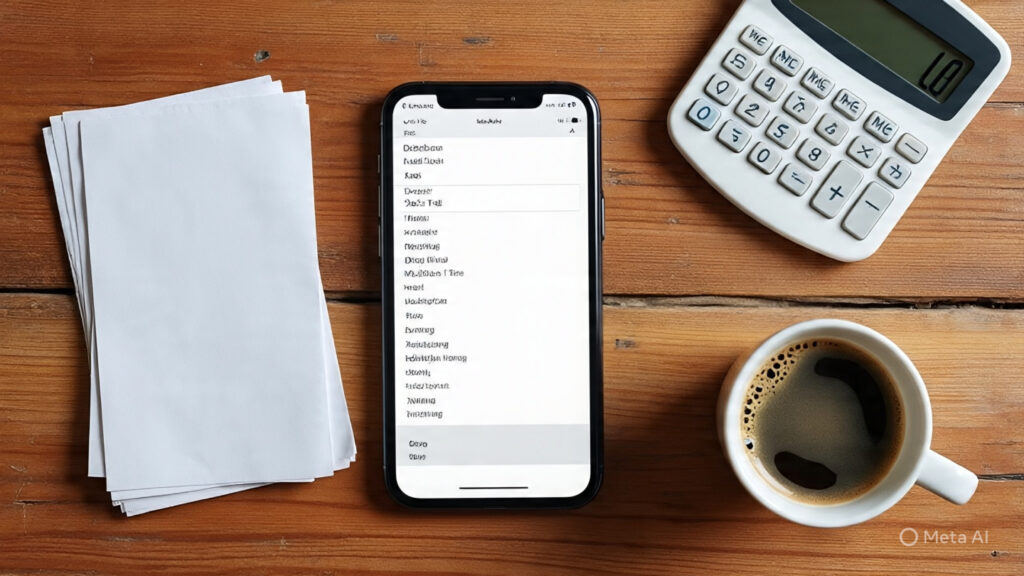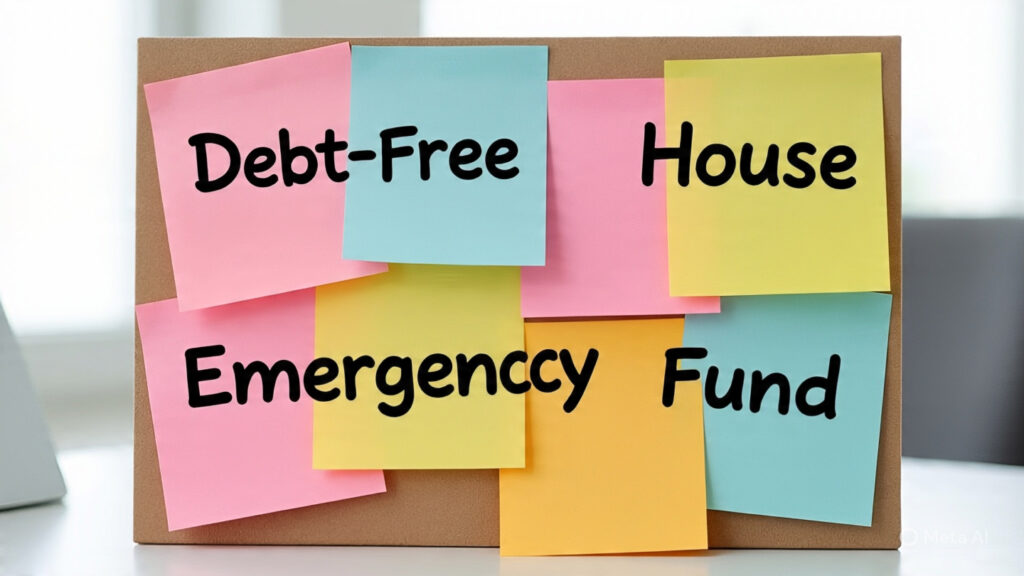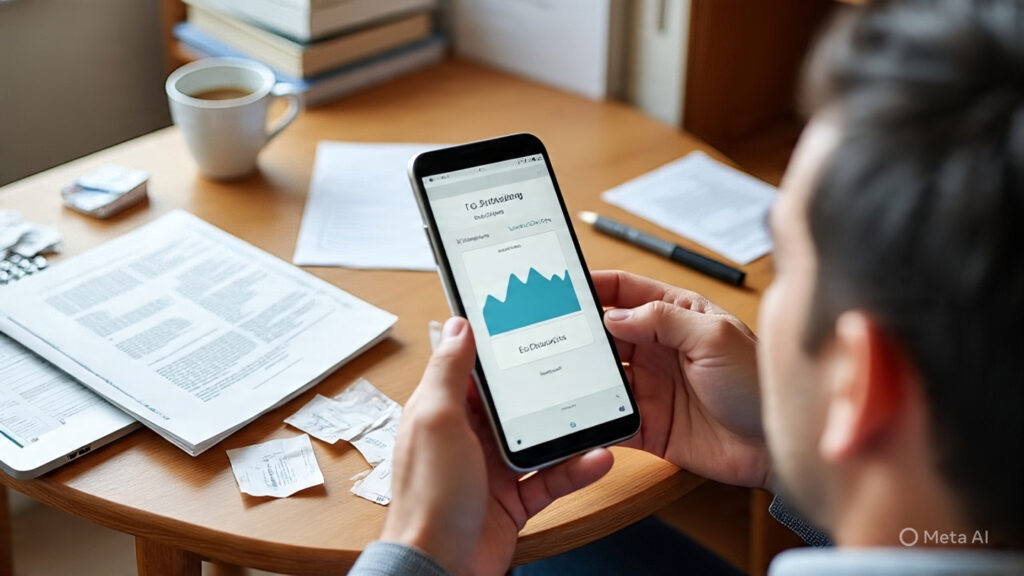Financial freedom isn’t just about earning more money—it’s about having control over your choices, your lifestyle, and your peace of mind. Imagine waking up and knowing that your bills are covered, your savings are growing, and you’re free to make decisions without financial stress holding you back.
Most people assume budgeting means restriction, sacrifice, or living like you’re broke. But the truth is the opposite: learning how to budget effectively for financial freedom is the very skill that gives you more control, flexibility, and opportunity in life.
Without a clear budget, money seems to “vanish” each month, leaving you stressed and unprepared. With the right approach, however, budgeting becomes your personal blueprint to stability, security, and eventually, financial independence.
This guide will walk you through a step-by-step system to take charge of your money, set empowering goals, and accelerate your journey toward financial freedom.

Step 1: Understand Your Current Financial Landscape
Before you can plan for the future, you need to know exactly where you stand today. Think of this step as creating a map: you can’t reach your destination if you don’t know your starting point.
Track Every Dollar: Where Your Money Really Goes
Start by tracking all your spending for at least one month. Use a simple app, a spreadsheet, or even a notebook. Write down every transaction, no matter how small. Group expenses into categories like housing, groceries, transportation, entertainment, and subscriptions.
This process may feel tedious at first, but it’s eye-opening. Many people discover that a large portion of their income leaks away through impulse buys or unnoticed recurring charges. Awareness is the first step to change.
Calculate Your True Net Income
Your net income is what you actually take home after taxes, retirement contributions, and deductions. Don’t mistake your gross salary for what’s available—it’s misleading. Your net income is your real starting point for building a budget.
Separate Fixed vs. Variable Expenses
- Fixed expenses: rent, mortgage, insurance, loan payments—bills that don’t change.
- Variable expenses: dining out, groceries, travel, hobbies—flexible categories you can adjust.
By distinguishing between these, you’ll quickly see where you have flexibility to cut back or reallocate funds.

Step 2: Set SMART Financial Goals
Budgeting feels pointless if you don’t know what you’re working toward. That’s why your goals—the “why” behind your budget—are so important.
Ask yourself: What does financial freedom mean to me? Is it being debt-free, buying a home, traveling the world, or retiring early?
Use the SMART Framework
To give your goals structure and clarity, make them:
- Specific: e.g., “Save Rs.8,00,000 for a down payment.”
- Measurable: track your progress monthly.
- Achievable: realistic given your income.
- Relevant: aligned with your version of freedom.
- Time-bound: set a deadline, e.g., “by Dec 2026.”
Prioritize Milestones
You may want multiple things: an emergency fund, debt repayment, investments, or retirement planning. Rank them in order of urgency. For most people, building a 3–6 month emergency fund is the first step.
Keep Goals Visible
Create a vision board, set reminders on your phone, or keep your savings progress chart in sight. Seeing your goals daily keeps motivation alive.

Step 3: Craft a Personalized Budget
Once you know your income, expenses, and goals, it’s time to build a budget that actually works for your lifestyle.
The 50/30/20 Rule: A Simple Framework
- 50% → Needs (housing, utilities, groceries)
- 30% → Wants (travel, entertainment, hobbies)
- 20% → Savings & Debt Repayment
This is a great starting point if you’re new to budgeting.
Zero-Based Budgeting: Give Every Dollar a Job
Here, income minus expenses equals zero. Every rupee is assigned to a category—whether bills, savings, or investments. This method works well for people who want strict control.
Envelope Method: A Hands-On Approach
Allocate cash into physical or digital “envelopes” for categories like food, transport, or entertainment. Once the envelope is empty, you stop spending in that category until the next month.
Choosing the right method depends on your personality. The point isn’t perfection—it’s consistency.

Step 4: Implement and Adapt Your Budget
Creating a budget is easy. Sticking to it is where real change happens.
Use Tools and Technology
Apps like Mint, YNAB (You Need A Budget), or Personal Capital can sync with your bank accounts, track spending, and send alerts when you overspend. If you prefer simplicity, a Google Sheet works just fine.
Expect the Unexpected
Life doesn’t follow perfect plans. Medical bills, car repairs, or job changes can disrupt your budget. This is why an emergency fund is essential—it keeps you from going into debt when surprises happen.
Regularly Review and Adjust
At the end of each month, review your budget. Where did you overspend? Where did you save more than expected? Adjust categories as needed. A budget isn’t rigid—it’s a living system that grows with your lifestyle.

Step 5: Accelerate Your Path to Financial Freedom
Budgeting is the foundation, but you can speed up your journey with additional strategies.
Increase Your Income
Cutting expenses has limits—but your earning potential doesn’t. Consider:
- Freelancing or side hustles
- Negotiating a raise
- Upskilling for higher-paying opportunities
- Turning hobbies into income streams
Extra income provides more room to save, invest, and pay off debt faster.
Automate Savings and Investments
Set automatic transfers to your savings account, retirement fund, or investment plan the moment your salary arrives. Automation removes temptation and builds consistency.
Attack Debt Aggressively
Debt eats into your cash flow. Two proven strategies:
- Snowball Method: pay off smallest debt first, then roll payments into the next.
- Avalanche Method: tackle high-interest debt first to save money long term.
The sooner you eliminate debt, the sooner your budget fully serves your financial freedom goals.

Conclusion: Your First Step Starts Today
Learning how to budget effectively for financial freedom isn’t about restriction—it’s about liberation. A budget gives you clarity, confidence, and control. It ensures your money works for you, instead of disappearing without a trace.
Remember:
- Track your spending and income.
- Set clear, SMART financial goals.
- Choose a budgeting method that suits you.
- Review and adapt regularly.
- Boost your progress with extra income, automation, and debt reduction.
No matter your income or current debt level, you can start today. Even small steps—like tracking your spending for one month or setting up your first automated savings transfer—will compound over time.
Your financial freedom journey begins the moment you decide to take control. The question is: will you start today?





